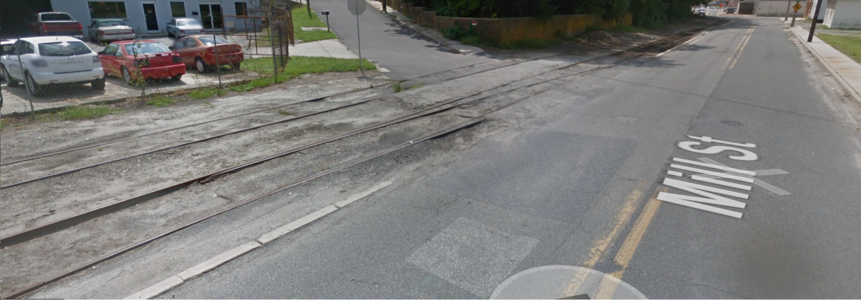Where Would the switch stand be on this turnout? It would of been used in the Pennsylvania railroad, last used might of been around the late 50's to early 70s. This line was always a spur and ended maybe less than a 1/4 mile to the right of photo. Now it ends only a few hundred feet since the highway was put in. there would of been a secon turnout 20 feet on the other side of this intersection on the lower line as well. The road has always been paved since it was one of the first to be paved since the road was part of the port of salisbury.
So it makes me wonder where would they have put the switch stand for these turnouts? The spur was built in the 1870's by the B&E, which merged with another and became the B.E&A, and then was taken over by the Pensy. and then conrail and NS and now the Delmarva central. The Pensy at some point before the highway was put in (the highway was put in; in the mid 50's) took out the switches that would of made it a runaround and used the top line as a car storage up until the late 70's early 80s. The Last remaining costumer of over a 100 years still recieve a car load or 2 every year full of seed.
So what would pensy of done for a secondary spur such as these for switch stand position and type?
thanks
So it makes me wonder where would they have put the switch stand for these turnouts? The spur was built in the 1870's by the B&E, which merged with another and became the B.E&A, and then was taken over by the Pensy. and then conrail and NS and now the Delmarva central. The Pensy at some point before the highway was put in (the highway was put in; in the mid 50's) took out the switches that would of made it a runaround and used the top line as a car storage up until the late 70's early 80s. The Last remaining costumer of over a 100 years still recieve a car load or 2 every year full of seed.
So what would pensy of done for a secondary spur such as these for switch stand position and type?
thanks


